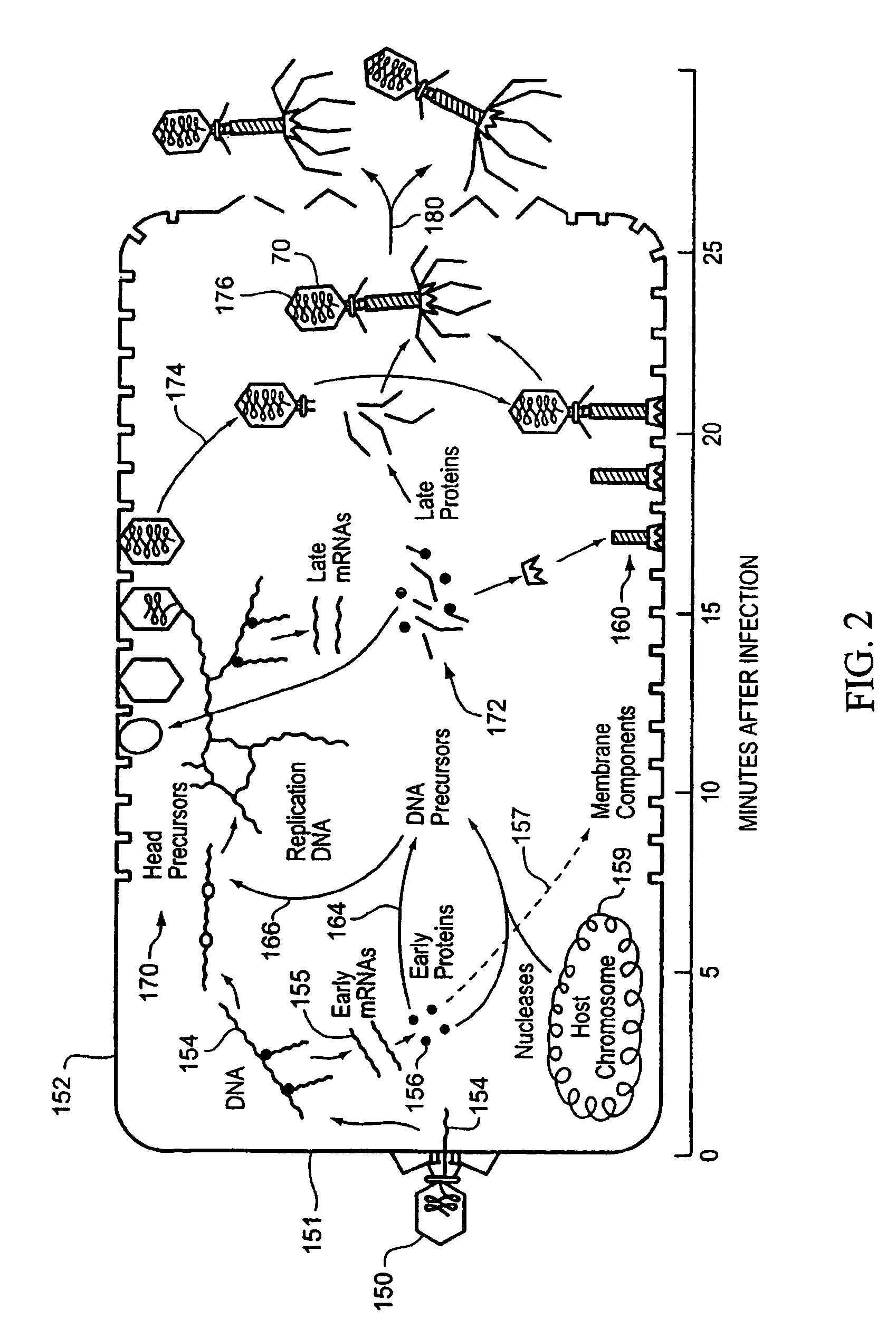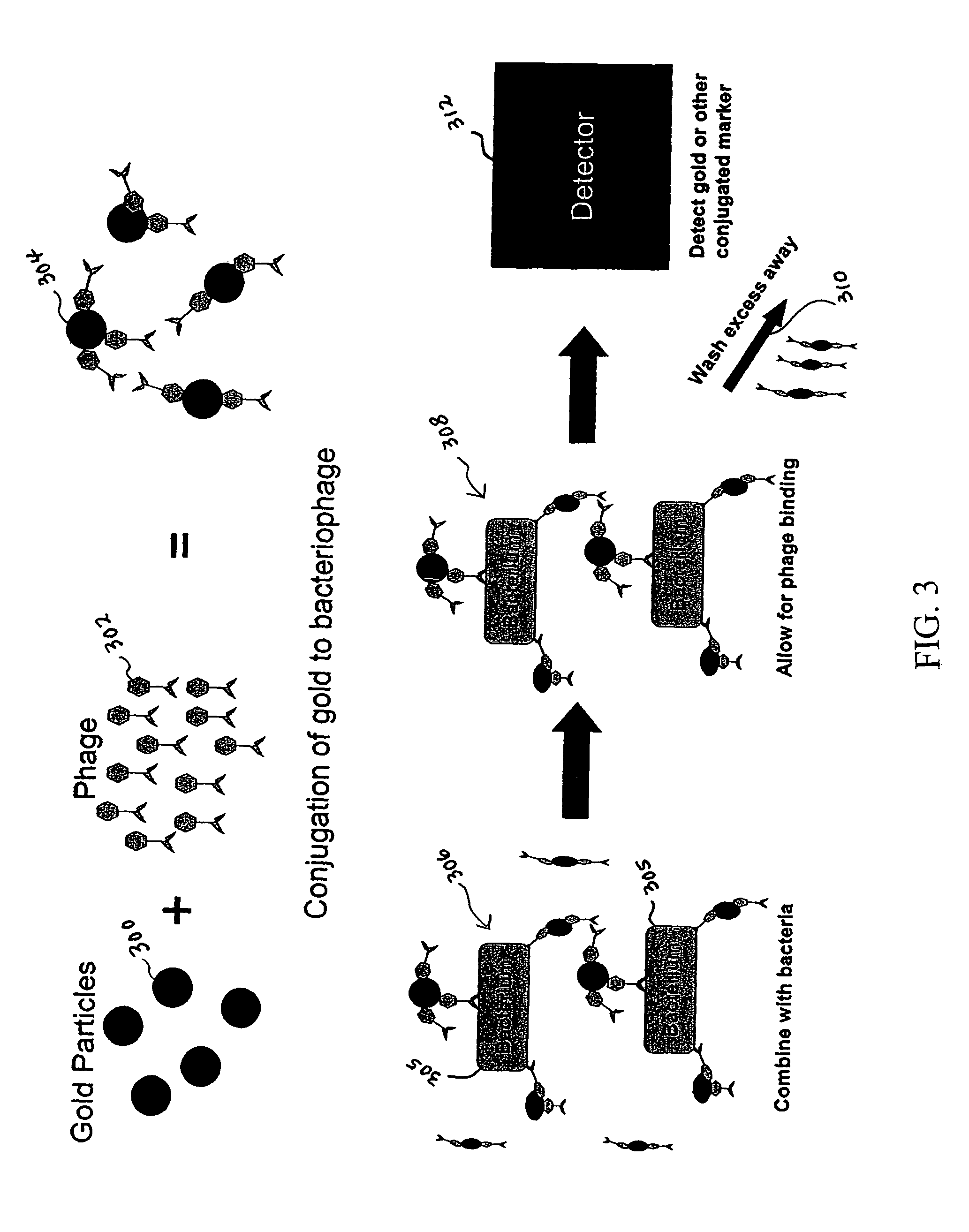Apparatus and method for detecting microscopic organisms using bacteriophage
a technology of microorganisms and phages, applied in biochemistry apparatus and processes, instruments, measurement devices, etc., can solve the problems of not providing detectable or statistically significant signals for flagged phages, and achieve the effect of simple operation
- Summary
- Abstract
- Description
- Claims
- Application Information
AI Technical Summary
Benefits of technology
Problems solved by technology
Method used
Image
Examples
Embodiment Construction
[0038]The methods and apparatus of the invention rely on the usage of phage, e.g., bacteriophage, to detect the presence of target microscopic organisms (microorganisms), such as a bacterium, in a sample.
[0039]The invention provides methods and apparatus for detecting microorganisms through specific interactions of the phage with the outside surface of the target microorganism. When the phage adsorbs to the surface of the microorganism the phage acts as a signal, or a signal target, for the presence of the target microorganism. Embodiments of the invention further provide convenient and inexpensive methods and apparatus for concentrating and detecting the phage bound microorganism complexes.
[0040]The disclosed invention offers a combination of specificity, sensitivity, simplicity, speed, and / or cost which is superior to any currently known microorganism detection method. The method taught herein relies on the usage of phage to indirectly detect the presence of one or more target mic...
PUM
| Property | Measurement | Unit |
|---|---|---|
| colorimetric | aaaaa | aaaaa |
| fluorescent | aaaaa | aaaaa |
| Forces | aaaaa | aaaaa |
Abstract
Description
Claims
Application Information
 Login to View More
Login to View More - R&D
- Intellectual Property
- Life Sciences
- Materials
- Tech Scout
- Unparalleled Data Quality
- Higher Quality Content
- 60% Fewer Hallucinations
Browse by: Latest US Patents, China's latest patents, Technical Efficacy Thesaurus, Application Domain, Technology Topic, Popular Technical Reports.
© 2025 PatSnap. All rights reserved.Legal|Privacy policy|Modern Slavery Act Transparency Statement|Sitemap|About US| Contact US: help@patsnap.com



